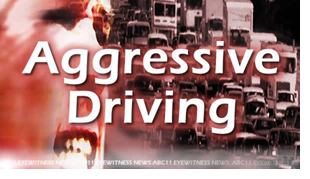
Law enforcement officers watching for aggressive drivers
They’re out there and you’ve seen them – bold, pushy or selfish drivers putting you and others at risk. That’s why ITD and Idaho law enforcement agencies are combining forces to stop aggressive driving through April 14.
Beginning today (April 5), more than 70 Idaho law enforcement agencies will write tickets for aggressive driving as part of a statewide mobilization to eliminate fatalities and serious injuries on Idaho highways.
 “Nearly half of all drivers will admit to aggressive driving in the past 30 days,” said Josephine O’Connor from ITD’s Office of Highway Safety. “Most of us drive aggressively at some point, but we don’t think that it could result in either ourselves or our passengers being killed or seriously injured.”
“Nearly half of all drivers will admit to aggressive driving in the past 30 days,” said Josephine O’Connor from ITD’s Office of Highway Safety. “Most of us drive aggressively at some point, but we don’t think that it could result in either ourselves or our passengers being killed or seriously injured.”
In Idaho, 465 people were killed as a result of aggressive driving from 2007 to 2011. Aggressive driving contributes to nearly half of all Idaho motor vehicle crashes. Nearly three-quarters of aggressive driving crashes statewide occur in urban areas, but four out of five fatal aggressive driving crashes involve a single vehicle speeding through a rural area.
Drivers ages 19 and younger are more than four times as likely to be involved in an aggressive driving crash than all other drivers.
Speeding, ignoring traffic control devices, following too close (tailgating), driving too fast for conditions, weaving in and out of traffic, making improper lane changes, passing on shoulders in an unsafe manner and unnecessary use of a vehicle horn are considered aggressive driving behaviors and traffic violations by law enforcement.
Screaming or flashing lights and making rude hand or facial gestures are additional aggressive driving behaviors that could escalate to road rage, which is a criminal act.
Road rage is a deliberate assault with a motor vehicle or other dangerous weapon by the occupant of one vehicle against the occupant of another vehicle, O’Connor explained. Often, the person who incites the road rage may not have done so intentionally.
Road rage can lead to criminal charges.
O’Connor advises motorists to stay calm and safely move out of the way if confronted by an aggressive driver. Do not challenge him or her, avoid eye contact and ignore gestures. Always be sure that seat belts are fastened in case abrupt movements cause a loss of vehicle control.
Citizens have the right to report an aggressive driving or road-rage incident to law enforcement agencies if witnessed in the absence of an officer.
“Find a safe place to call 911, or call dispatch when you get home. If possible, provide time, location, license plate number, and vehicle and driver description,” O’Connor said. “Describe the incident in detail and be prepared to appear in court, if needed.”
Published 4-5-13